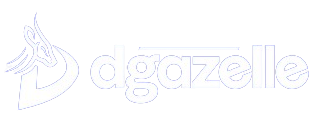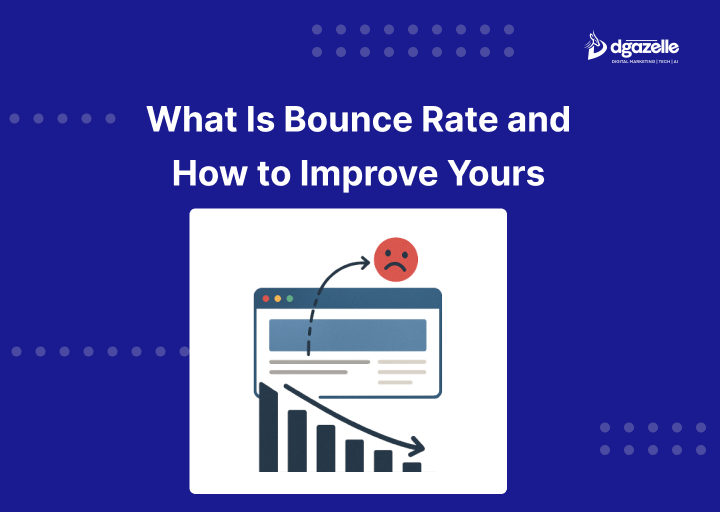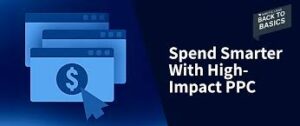When it comes to understanding how your website is performing, bounce rate is one of the most telling metrics, but it’s also one of the most misunderstood. Simply put, bounce rate tracks the percentage of people who land on your website and leave without clicking on anything, filling a form, or spending more than a few seconds. In essence, it measures how many visitors didn’t engage with your site.
Now, if you’re running a business in Nigeria whether it’s a service, e-commerce, or consulting brand, this matters. A high bounce rate might mean your website isn’t doing its job in keeping visitors interested or guiding them toward taking action. That’s a missed opportunity.
A bounce happens when someone lands on a page, doesn’t scroll, click, or interact, and then leaves. It’s not the same as exit rate, which tracks when people leave a specific page but after possibly visiting others. Bounce rate gives deeper insight into your site’s initial impression and content effectiveness.
And if you’re wondering how to create a site that keeps people exploring, well that’s where Dgazelle comes in. But more on that later.
How Is Bounce Rate Calculated?
Bounce rate is calculated by dividing the number of visitors who didn’t engage with your website by the total number of visitors during a specific period. For example, if 1,000 people visited your site in a month and 400 left without clicking or scrolling, your bounce rate would be 40%.
Here’s the simple formula:
Bounce Rate = (Unengaged Sessions / Total Sessions) × 100
For Nigerian business owners, this is more than just numbers. A high bounce rate might mean your homepage isn’t doing enough to pull people in or your site structure isn’t guiding visitors well. If that’s the case, your site could use a strategic upgrade—something we help businesses achieve every day at Dgazelle.
What’s a “Normal” Bounce Rate?
First off, let’s be clear—bounce rates aren’t one-size-fits-all. Different websites and even different pages within the same site will naturally have varying bounce rates. For instance, a contact page with just a phone number or address may have a high bounce rate—and that’s perfectly normal. The visitor came, got what they needed, and left.
Similarly, blog articles tend to have higher bounce rates because people often skim, get value, and exit. That doesn’t always mean something is wrong.
According to CXL’s data:
- Ecommerce websites: 20–45%
- B2B websites: 25–55%
- Lead generation sites: 30–55%
- Content websites (like blogs): 35–60%
- Landing pages: 60–90%
- Dictionaries/portals: 65–90%
Industry plays a role too—real estate sites average around 44.5%, while food and drink sites can hit up to 65.5%.
For this data to make sense, you need to think about how these websites are used.
Real estate websites have a much lower bounce rate because website visitors are likely browsing multiple properties before leaving the site. Restaurant websites offer quick bits of information, like location, hours, or menus, and don’t require as much clicking around or engaging with the content.
CXL also discovered that bounce rate can differ based on the channel through which a website visitor landed on your site. For example, someone who found your site organically through search doesn’t have as high of a bounce rate as someone who landed on your site from a social media link.
How to Improve Your Bounce Rate
A high bounce rate is often a red flag that visitors aren’t connecting with your site. To reduce it, your website needs to be fast, easy to navigate, and offer value quickly. Here’s how to keep your audience engaged especially in a digital landscape like Nigeria, where attention spans are short and data is precious.
1. Speed Up Your Page Load Time
In Nigeria, where internet speeds can vary widely, a slow-loading website is an engagement killer. If your site takes more than a few seconds to load, visitors are likely to bounce before it even finishes.
Start by optimizing performance:
- Use a reliable and fast hosting provider
- Compress large image files
- Minimize code bloat and use clean, efficient scripts
- Leverage browser caching and content delivery networks (CDNs)
- Reduce unnecessary redirects
2. Optimize for Mobile Users
In Nigeria, over 80% of internet access happens via mobile phones. If your website isn’t mobile-friendly, you’re losing potential customers by the minute. A mobile-optimized site isn’t a luxury, it’s a necessity.
Here’s how to do it right:
- Use a responsive design that adapts to all screen sizes
- Choose legible font sizes and bold headings
- Make buttons big and easy to tap
- Avoid intrusive pop-ups that frustrate users
- Use a hamburger menu for easier navigation
3. Satisfy Search Intent
Think about what your visitors are really looking for. If someone lands on your site through Google, but the content doesn’t match their needs, they’ll leave immediately hurting your bounce rate.
For example, if your page promises “affordable property in Abuja” but only lists generic real estate tips, you’ve missed the mark. Every page on your website should clearly answer a question or fulfill a purpose.
At Dgazelle, we help you plan your website content around real user intent so your audience finds what they’re searching for, stays longer, and trusts your brand more.
4. Focus on What’s “Above the Fold”
Your website’s first impression is everything. What a visitor sees before they scroll, known as “above the fold” can either hook them or send them bouncing off. Nigerian audiences are quick to judge a site’s value, especially on mobile.
To keep them engaged:
- Use captivating visuals or product photos
- Write a bold headline that explains what you do instantly
- Add a short, benefit-driven subheading that draws readers in
The goal is to show your value immediately by designing high-converting hero sections that grab attention and guide users deeper into your site content right from the first glance.
5. Make Your Content Easy to Digest
Nobody wants to read endless text. If your site feels like a textbook, users won’t stick around. Nigerian users, especially those browsing on mobile, prefer skimmable, clean, and engaging layouts.
Make your pages more reader-friendly with:
- Short paragraphs and white space
- Bullet points and numbered lists
- Relevant images, videos, and infographics
- Clear calls to action (CTAs)
- Highlighted boxes or quick tips
We help brands turn boring layouts into dynamic, easy-to-navigate content experiences that hold attention and boost engagement, keeping bounce rates low and conversion rates high. Let’s chat
8. Add a Table of Contents
Placing a table of contents at the top of each blog post immediately lets visitors know what they can learn by reading or make it easier for them to find the exact section they’re looking for.
Plus, making your blog contents interactive helps to lower your bounce rate by letting readers click around to read the sections that interest them most.
9. Include a Call-to-Action
Include buttons that lead users to take a desired action. On a landing page, your call-to-action might be to request a demo, sign up for an account, purchase a product, or fill out a form. On a blog post, it might be to watch a video, read another blog post, or sign up for your email newsletter.
But including call-to-action buttons that tell users exactly what you’d like them to do next is your best chance of getting them to do just that.
Summary
Your website’s bounce rate can be a quiet warning sign that something’s off, maybe it’s too slow, not mobile-friendly, or just not engaging enough. Instead of ignoring it, use bounce rate as a guide to improve your site’s performance.
Run a quick audit and identify what’s pushing people away. Then take action, optimize your loading speed, structure your content better, or add internal links that lead visitors deeper into your site.
These small tweaks can lead to big results in traffic, engagement, and conversions. At Dgazelle, we help Nigerian business owners turn high bounce rates into high-performing websites that truly connect with their audience.
Want more tips to increase traffic and boost your brand online?







